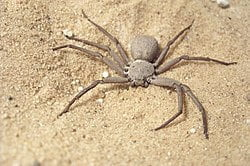EVERYTHING YOU NEED TO KNOW ABOUT TIGERS

Every year World Tiger Day (July 29) is celebrated with the aim of raising awareness about the need to conserve this wild animal in danger of extinction, since currently the 6 species of tigers that exist are at risk of disappearing. 97% of the world's wild tigers have been lost in 100 years and man is their main enemy. The main causes of their disappearance are poaching, loss of their natural habitat and lack of prey.
The 11 curiosities you should know about the tiger
1. The tiger is the largest feline in the world, males can measure up to 3 m and weigh between 180-350 kg, while females do not exceed 2.6 m in length and 160 kg in weight. Bengal tigers have fangs of up to 10 cm, longer than any other feline.
2. The average lifespan of a tiger in the wild is 15 years, and in captivity it can live a few more years.
3. The tiger has keen night vision and is also believed to have some color vision, like most felines.

4. The tiger species in the world are: Bengal Tiger, Indochinese Tiger, Malayan Tiger, Siberian Tiger, Sumatran Tiger, Amur Tiger and South China Tiger. They are all in danger of extinction. The main causes are poaching, habitat loss and lack of prey.

5. The tiger is an excellent hunter carnivorous mammal, during the hunt it can reach 80 km per hour. When hunting, it moves against the wind to avoid being discovered by its body odor. In addition, it is an excellent swimmer, it can surprise and hunt prey in the water. Their diet consists of monkeys, wild boars, deer, peacocks, antelopes, buffalo...

6. The tiger is a solitary and territorial animal, the males keep females in their area with whom they mate.
7. Females can reproduce from 4 years old, gestation usually lasts about 15 weeks and after that period, they usually have 1 to 6 puppies.
There are nine subspecies of tiger, three of which are extinct. Those that still roam freely in nature are the Sumatran tiger, the Amur tiger, the Bengal tiger, the Indochinese tiger, the South China tiger and the Malayan tiger. But these tigers need our help. Every part of the tiger's body, from whiskers to tail, is trafficked into illegal wildlife markets. That's why WWF urges governments to strengthen law enforcement, invest in more field staff and commit to long-term demand reduction efforts to end wildlife crime. .
Tigers are the largest of all Asian cats, weighing up to 300 kilograms (660 pounds). The smallest tiger subspecies, the Sumatran tiger, weighs about 140 kilograms (310 pounds) at most. In each subspecies, the males weigh more than the females.
Tigers have been known to live up to 26 years of age in the wild. On average, female tigers give birth to two to four cubs at a time and can do so every two years. Survival is difficult for cubs as half of all cubs fail to live beyond two years.
Illegal hunting has caused the tiger to become one of the animals that requires the attention of government entities for its protection, not only for the preservation of the species, but also that of its habitat, since this is also one of the the main causes that make them at imminent risk. According to figures revealed by the Save The Tiger foundation, a pulverized tiger bone can be worth around 65 euros on the black market, while the skins are sold in Tibet and Russia for more than 60,000 euros.
One of the animal films that were presented at the IV version of the Planet On International Environmental Film Festival was Tigerland, a story of two great men who dedicate their lives to changing the fate of tigers in the face of the unfortunate scenario they must live in and that are exposed due to the commercialization of their skins, tusks and some other parts of their body, since in addition to hunting, more tigers currently live in captivity than in the wild. Different countries of the world have understood the importance of caring for and preserving this species, India and Russia are key to the survival of the feline species, since they are home to 70% of the entire population in the world.
One of the animal films that were presented at the IV version of the Planet On International Environmental Film Festival was Tigerland, a story of two great men who dedicate their lives to changing the fate of tigers in the face of the unfortunate scenario they must live in and that are exposed due to the commercialization of their skins, tusks and some other parts of their body, since in addition to hunting, more tigers currently live in captivity than in the wild. Different countries of the world have understood the importance of caring for and preserving this species, India and Russia are key to the survival of the feline species, since they are home to 70% of the entire population in the world.
Feline populations are declining at an alarming rate, they have gone from being predators to prey. With the aim of alerting the entire world to the current situation, the United Nations carries out an environmental effort by dedicating World Wildlife Day to the big cats. According to UN figures, the tiger is the most threatened of the big cats, with a decrease of 95% in recent years. WWF denounces that this species currently occupies 7%.
The call is for human beings to become environmentally aware and take responsibility for the decline of the big cats, so we can also make the change if we take measures to progressively improve the panorama. One of the great solutions is conservation policies and strategies that can be carried out to curb illicit trafficking and poaching.
The call is for human beings to become environmentally aware and take responsibility for the decline of the big cats, so we can also make the change if we take measures to progressively improve the panorama. One of the great solutions is conservation policies and strategies that can be carried out to curb illicit trafficking and poaching.
8. Tiger cubs at the age of 8 weeks are ready to leave the shelter and follow the mother. At 18 months, tigers become independent but it is not until they are 2 years old when they separate from their mother permanently.

9. Most tigers have orange or tawny fur, a white middle and ventral area, and stripes that range from black to dark brown. They usually have less than 100 stripes, although the number of these varies according to sex, females have fewer. Like fingerprints on people, the stripe pattern is unique to each specimen and serves for individual identification.

10. It lives in the savannahs, tropical and subtropical forests of the Asian continent, a third of the world population of tigers lives in India and Bangladesh. In Hindu mythology he is the guardian of the jungle, creator of the rain and bearer of the Mother Goddess.

11. The tiger is the largest cat in the world, males can measure up to 3 m and weigh between 180-350 kg, while females do not exceed 2.6 m in length and 160 kg in weight. Bengal tigers have fangs of up to 10 cm, longer than any other feline.

Phoenix
The phoenix is a long-lived bird that regenerates from the ashes of its predecessor. According to some sources, the phoenix dies in a spectacle of flames and combustion, although other sources claim that the legendary bird dies and simply decomposes before being born again.
There are different traditions regarding the lifespan of the phoenix, but in most cases the phoenix lived to about 500 years before the renaissance. Herodotus, Lucanus, Pliny the Elder, Pope Clement I, Lactantius, Ovid, and Isidore of Seville are among those who have contributed to the retelling and transmission of the theme of the Ave Fénix. In ancient Greece and Rome, the phoenix was associated with Phoenicia, modern day Lebanon, a civilization famous for its production of purple dye from shells and for its maritime trade over vast expanses across the Mediterranean.






Comentarios
Publicar un comentario